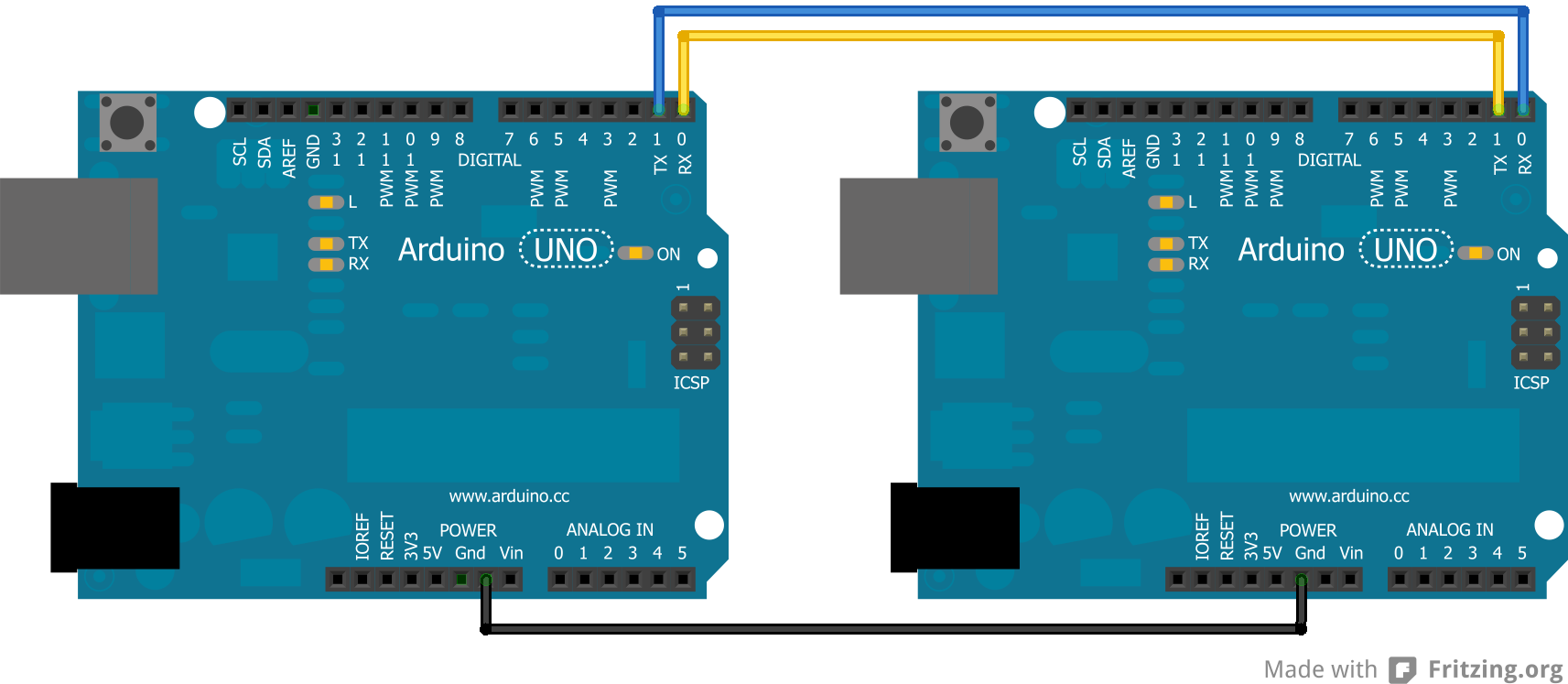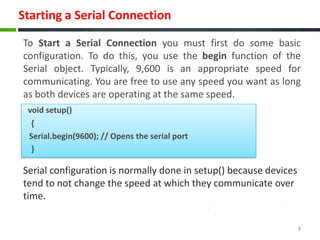
- #Arduino serial communication basics how to#
- #Arduino serial communication basics serial#
- #Arduino serial communication basics code#
True to their name, these bits mark the beginning and the end of a packet respectively. They are the start bit and the stop bit(s). The synchronization bits are two or three special bits transferred with each packet of data. These mechanisms, which we get for eschewing the external clock signal, are − These rules are nothing but mechanisms that help ensure robust and error-free data transfers.
#Arduino serial communication basics serial#
The asynchronous serial protocol has a number of built-in rules. If there is no clock line, it is asynchronous.įor example, UART (Universal Asynchronous Receiver Transmitter) module is asynchronous. If the same clock is given to all the connected devices, then they are synchronous. It is easy to find out if a device is synchronous or not. Synchronous − Devices that are synchronized use the same clock and their timing is in synchronization with each other.Īsynchronous − Devices that are asynchronous have their own clocks and are triggered by the output of the previous state. Serial communication can be further classified as − Fortunately, Arduino automatically takes care of this, so that the work of the programmer/user is reduced to simple write (data to be sent) and read (received data). It is a set of rules, which must be applied such that the devices can correctly interpret data they mutually exchange. One of the most important things concerning serial communication is the Protocol, which should be strictly observed.

Data is transferred in huge, crashing waves of 1’s and 0’s. They usually require buses of data - transmitting across eight, sixteen, or more wires. Parallel interfaces transfer multiple bits at the same time. However, in other cases when it is necessary to establish communication between two devices for longer distances it is not possible to use parallel connection. Parallel connection between the Arduino and peripherals via input/output ports is the ideal solution for shorter distances up to several meters. Each protocol can be categorized into one of the two categories: parallel or serial. You should see this output.Hundreds of communication protocols have been defined to achieve this data exchange.

#Arduino serial communication basics code#
Upload this code and select Tools > Serial Monitor (Shift+Ctrl+M). Serial Monitor will display data we sent from Arduino Uno. For this we are going to use Arduino IDE’s Serial Monitor.
#Arduino serial communication basics how to#
How to do it? In this example we’ll connect Arduino and a computer using UART port.

Arduino Uno Shown with UART port and Tx,Rx Pins Arduino may communicate with many devices including:

Generally this transmission happens at 9600 bits per second which is termed as baud rate. Arduino Uno supports serial communication via on-board UART port and Tx/Rx pins. Arduino uses asynchronous serial communication to send-receive data to and from other devices. Arduino serial communication is one of the many ways Arduino talks to other devices.


 0 kommentar(er)
0 kommentar(er)
